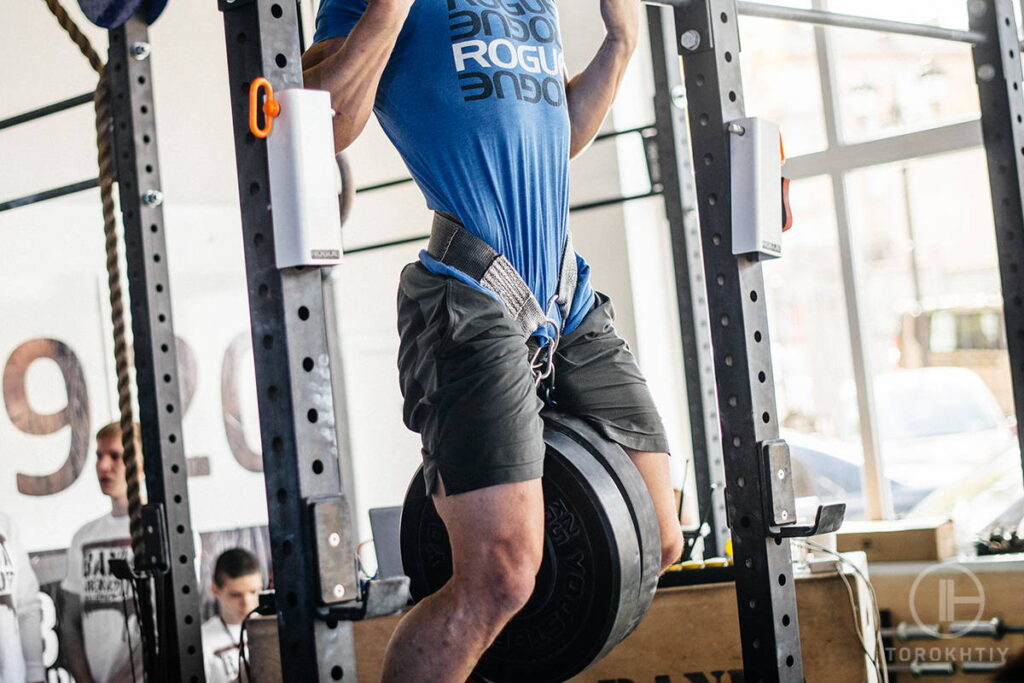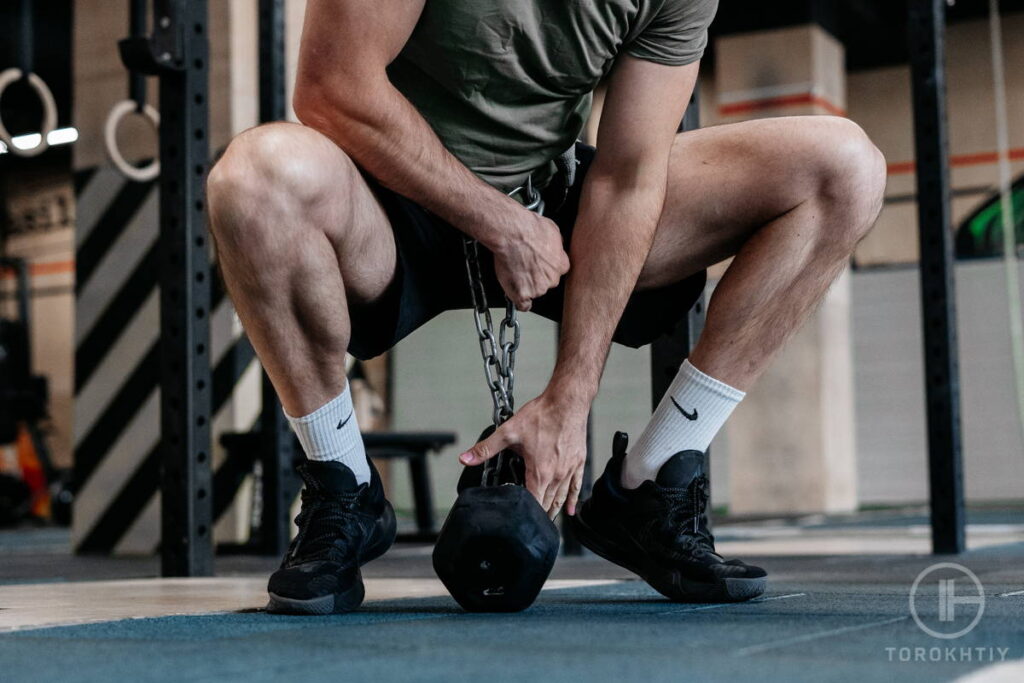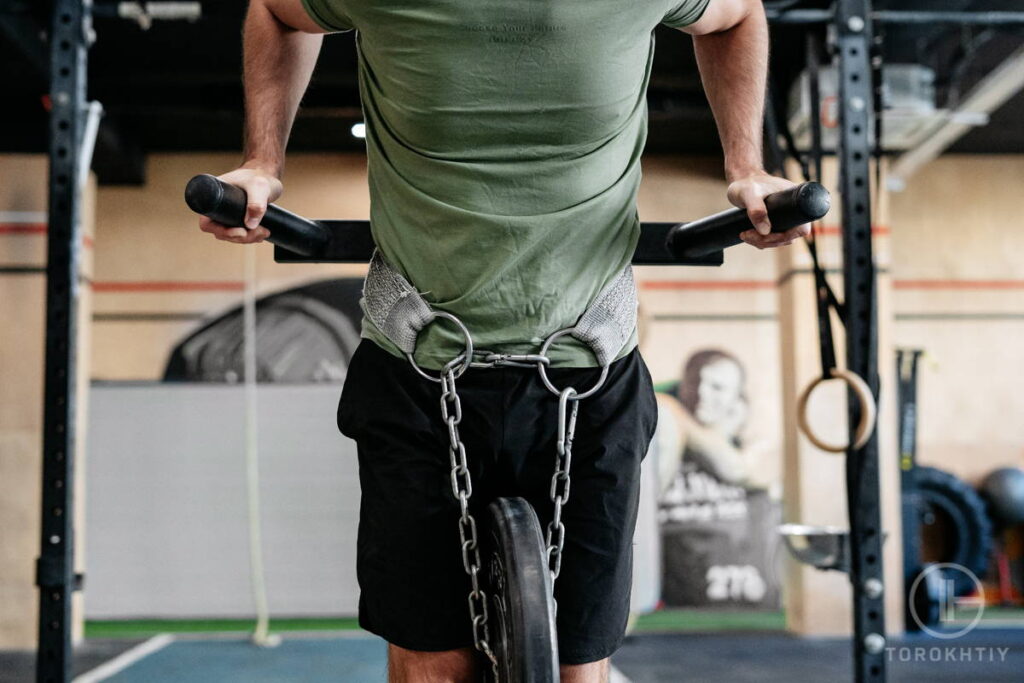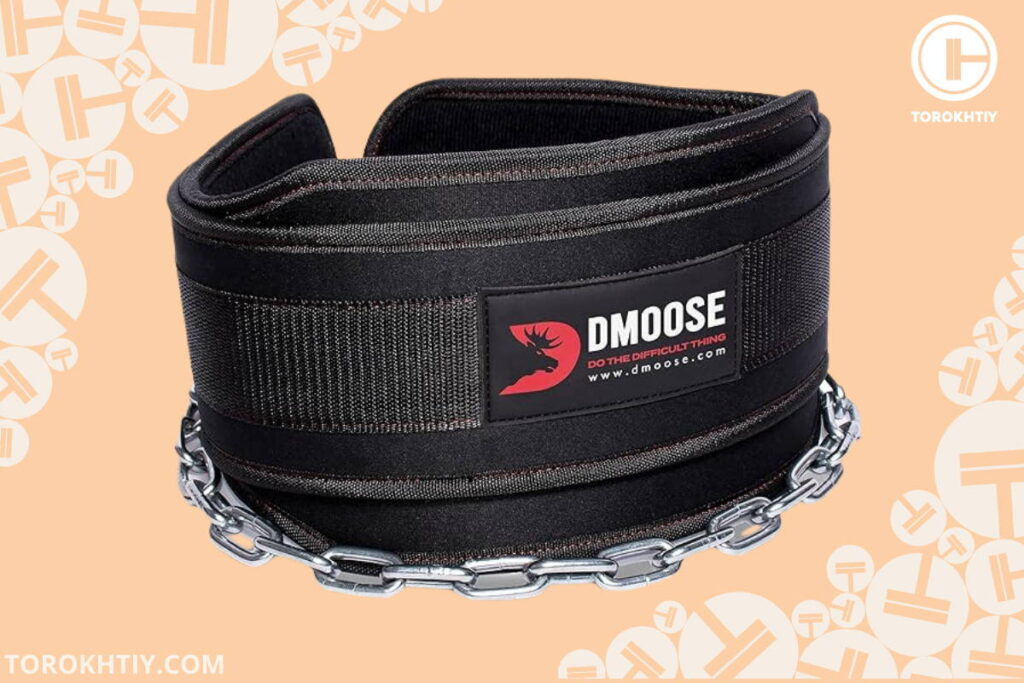Weighted Dips: Everything You Need to Know
Author:
Unlock your full potential by engaging with our experts and community! Have questions about your fitness journey or looking for expert advice on weightlifting techniques? Don’t hesitate — leave a comment below and Ihor Shymechko will provide a personalized answer and insights to help you reach your goals.
Torokhtiy is reader-supported. Some links are affiliate links, and we may earn a commission at no extra cost to you. See our disclosure page for details.
Dips are a well-known exercise that almost anyone has done or tried doing at least once in their lives. However, as you progress and your strength increases, the standard dips become less of a challenge. This is where weighted dips come in to help you continue working on your strength and to add variety to your workout regimen. In this short article, we will talk about all the weighted dips benefits and why they’re a must-do exercise for every athlete.
Weighted dips are a great exercise that targets multiple muscle groups in the upper body. They’re a more advanced variation of the standard chest dips and are recommended for advanced athletes that already have enough strength to perform them.

What are Weighted Dips?
Weighted dips are a terrific exercise that targets several muscle groups. It’s a more advanced variation of the standard dip exercise that’s typically recommended to more advanced athletes. They should only be performed when you have sufficient upper body strength, and you’re able to do several repetitions with proper form. If you feel like you’re still not at that level, simply continue performing the standard exercise, but with more reps and higher intensity until you build enough strength for the weighted variation.
What are the Weighted Dips Benefits?
The weighted dips are an exercise that targets several muscles in the upper body, including: chest, shoulders, triceps, upper back, lower back.
If they’re done correctly and with progressive overload, they can help you bulk up and add muscles to your upper body. However, that’s only one of its main benefits; let’s take a look at the other two.
Helps Build Strength
If you want to build up your strength for other exercises like the snatch, bench press, and even deadlift, then weighted dips offer a great way to do that. When done correctly, they target almost all of the muscle groups in your upper body and help them develop properly.
Training Opposite Muscle Groups
Weighted dips are a so-called “ closed kinetic chain exercise,” meaning that they enable you to train opposing muscle groups at once (something that doesn’t usually happen with most exercises). With all kinetic chain exercises, the feet or the hands are pressed against some kind of stable surface (when it comes to weighted dips, those are the parallel bars). Experts consider these types of exercises to be particularly useful, as they can target several (opposing) muscle groups with one movement and also isolate the muscle you’re trying to train.

How to Do Weighted Dips
The standard way to do weighted dips is fairly easy to understand, as there are only a few steps you need to follow. Let’s take a look at them.
1. The first thing you have to do is add weight. That’s typically done with the use of a dip belt that is wrapped around your waist. How much weight you’re going to add depends on your strength level; however, our advice would be to start slow and gradually add more weight.
2. After the weight is secured, the next thing you should do is step up to the parallel bars and lift up until you hold your body at arm’s length – with arms straight and locked. Remember to keep your wrists in line with your forearms and your head in a straight line along with your entire body.
3. Inhale and begin lowering the body. Here, you can lean forward slightly and let your elbows bend to the side.
4. Once you feel your chest muscles start to stretch, exhale and start pushing upwards until your return to your starting position.
5. Then repeat for several repetitions.
Now along with this standard way of doing weighted dips, there are also a few variations you can try to target specific muscle groups such as the chest or the triceps.
Weighted Dips for Chest
The chest muscles are always trained when you’re doing weighted dips. However, there’s a specific weighted chest dips variation that puts even more emphasis on that muscle group. That’s done mostly by leaning forward – to do this variation correctly, you have to bend your knees and push back your legs while you keep leaning your head forward. Along with that, if you’re able to do the dip with a wider grip, that will put even more stress on the pectorals during the exercise.
Weighted Dips for Triceps
On the other hand, if you want to put focus on training your triceps while doing weighted dips, you have to try to keep your body as upright as possible. To do that, you have to put your feet right below your waist and try to keep the body in one line by lifting your head and looking forward throughout the entire movement. If you can find parallel bars that allow you to get a closer grip that will also help target the triceps, the closer you bring the hands together, the more you require the strength of the triceps to lift up.

How to Add Weight to Dips?
There are many ways to add weight to the dip exercise. If you’re on a budget and you don’t have the means to buy equipment, you can easily use a backpack loaded with heavy objects (like books, canned food, bottles of water, etc). However, if you’re willing to invest in new equipment, dips can also be done with a dip belt or with dumbbells. Let’s see how.
Using a Dip Belt
Using a specialized belt to hold the weight plates or dumbbells is perhaps the most “professional” way to perform the weighted dips exercise. Typically, a dip belt consists of a chain that connects the weight to the belt and a padded back section that makes it more comfortable to wear. Besides the belt, you will also need a few weight plates (2,5 or 10lbs) that you can attach to it in order to make the dip “weighted.”
If we have to choose one particular model to recommend, it would be DMoose Dip Belt. It’s a sturdy, high-quality, and durable dip belt that’s available in several colors and styles. It has both a hook and loop closure, so you can be certain that the weight is tightly secured, and its chain is made from premium steel, ensuring that it will last for many workouts. It’s also super comfortable to wear, thanks to the neoprene used for the back section.
Using Dumbells
Weighted dips with dumbbell are a great variation if you already own dumbbells at home or if you’re looking to perform the exercise at the gym without needing specific equipment (such as a dip belt). Performing this variation of the exercise is extremely easy. You just need to get a dumbbell that’s heavy enough for you and then place it between your feet. After that, simply raise up your arms and grab the dumbbell from the floor using your feet and ankle to hold on to it. From there, the movement remains the same – try to go up and down with moderate speed, ensuring that you maintain proper form.
Weighted Dips We Recommended – Dmoose Weighted Belt

FAQ
Are weighted dips better than bench press?
It depends on your goals. With weighted dips, muscles worked include almost every group in your upper body, which makes it ideal if you’re working towards improving athletic performance. However, the bench press helps you build more mass, as you can easily add more weight and progress sufficiently over the course of a few months.
How heavy should weighted dips be?
The most important part of performing any exercise is the form. So, as long as you’re able to maintain proper form, you can add as much weight as you like. However, if you start falling back on your form and performing the dip incorrectly, that’s a sure sign that you need to lower the weight.
What do I need for weighted dips?
In order to do weighted dips, you need parallel bars and some sort of way to add extra weight. That can be with a backpack full of heavy suggested, with the help of a dip belt and weight plates, or with dumbbells. And of course, you also need to have enough strength to be able to perform this variation.
In Conclusion
Weighted dips are a terrific exercise that can help you build strength in the upper body. It’s a great addition to almost any training regime, regardless of whether you’re a powerlifter, fitness athletes, Olympic weightlifter, or simply a person who goes to the gym to get a summer body. With that said, we’re curious to learn what you think about this exercise – do you do it? Would you recommend it to someone? Let us know in the comments.
Also Read:
- Military Vs Overhead Vs Shoulder Press
- Barbell Vs Dumbbell Shoulder Press
- Clusters Functional Fitness
- Barbell Sumo Squat
- Gymreapers Lever Belt Review
- Best Weightlifting Belt
- Kettlebell Buying Guide
- Beginner’s Guide To Cable Machines
References:
- Weighted Dips and Muscle Mass // Live Strong:
https://www.livestrong.com/article/468896-weighted-dips-and-muscle-mass/
Why Trust Us?
With over 20 years in Olympic weightlifting, strength training, nutrition coaching, and general fitness our team does its best to provide the audience with ultimate support and meet the needs and requirements of advanced athletes and professional lifters, as well as people who strive to open new opportunities and develop their physical capabilities with us.
By trusting the recommendations of our certified experts in coaching, nutrition, and sports training programming, as well as scientific consultants, and physiotherapists, we provide you with thorough, well-considered, and scientifically proven content. All the information given in the articles concerning workout programming, separate exercises, and athletic performance, in general, is based on verified data.
The product testing process is described in more detail here.
Author: Ihor Shymechko
Pro Olympic Weightlifter, Coach
Best Results: Snatch – 208 kg,
C&J – 240 kg
Ihor has been a professional weightlifter since 1996, boasting over two decades of competition experience. His notable achievements include clinching the European Championship in 2009 and securing a silver medal in the 105kg division at the Senior World Championships in 2011. Ihor represented his country in the 2008, 2012, and 2016 Summer Olympics. After retiring from competitive weightlifting, he transitioned to coaching, leveraging his vast experience to guide athletes who now compete on both national and international stages.



Still have questions after reading our article? Unlock your full potential by engaging with our experts and community! Don’t hesitate — leave a comment below and Ihor Shymechko will provide a personalized answer and insights to help you reach your goals.